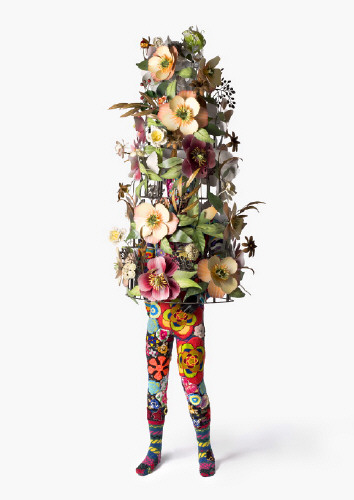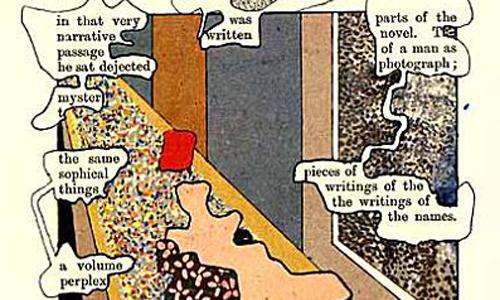Coming Attractions at Museums: March 2013
The month’s standouts include Nick Cave’s Soundsuits at the Peabody-Essex Museum and two exhibitions at MassMoCA.
By Peter Walsh.
The only building built in North America by the great French architect Le Corbusier turns 50 this year.
An unexpected commission in an unlikely spot on the Harvard campus, the Carpenter Center still stands out among brick, neo-Georgian neighbors: built of bare concrete or “béton brut” as its French pioneers called it, supported by a grid of reinforce concrete columns with undefined interior spaces and roof gardens, the building was a kind of late-career summing up of Le Corbusier’s ideas. Local wags compared it to the copulation of two grand pianos. But it is arguably the greatest single piece of architecture Harvard ever built.
On March 28 at 6 p.m., as part of a wider celebration of the Carpenter’s half-century, the center will present a “multi-projection” event using the set of unconventional, sideways projection slots Le Corbusier designed for the building’s main lecture hall. Created when Le Corbusier and other artists were experimenting with multi-media, multi-image projection works, the geometric windows in the lecture hall walls haven’t been used in decades. This rare event will restore to use one of the building’s many provocative features, designed to shake Harvard ungrads into creativity.
Missouri-born Nick Cave is chair of Fashion Design at the School of the Art Institute of Chicago. He is best known for his stunning Soundsuits (through May 27)—fantastic agglomerations of twigs, beads, feathers, basketwork, and other shimmering, shaking, brilliantly-colored materials that transform their wearers into dancers from a lost tribe or diplomatic emissaries from a culturally advanced civilization of the future. The Peabody-Essex Museum’s exhibition of Nick Cave’s signature works includes three never-before-seen Soundsuits.
Eight-Sided Autobiography
Amherst College graduate Orson Squire Fowler (1809–1887) was the inventor of one of the great American quackeries: phrenology, a pseudo-science that claimed to be able to read a person’s character and personality by examining the bumps on his head. Like so many Victorian intellectuals, Fowler enthusiastically threw himself into several other, unrelated fields as well, writing and lecturing on health, popular education, and social reform.
Fowler was also largely responsible for the very brief, mid-nineteenth-century vogue for the “Octagon House,” claiming, quite correctly this time, that eight-sided dwellings enclosed space more efficiently, were easier to heat, were cooler in summer, and let in more natural light than convention, quadrilateral buildings.
In his new exhibition at MassMoCA (Mark Dion: The Octagon Room, opening March 23) artist Mark Dion, who often works with nineteenth-century ideas, including museum taxidermy displays, takes Fowler’s legacy as a metaphor for individualism. He imagines the eight-sided survivors of the octagon fad as standing defiantly against their squared-up neighbors. Dion’s octagon, built like a concrete bunker, represents an “abandoned office” whose contents suggest his own “labyrinthine” history over the past eight years, a collection of randomized objects ordered, like the Pentagon, by geometry.
Reborn Victorians
Another Victorian, British writer W. H. Mallock, made a career as a philosophical novelist who railed against all forms of radicalism: political, economic, social, and religious. Mallock’s novel, A Human Document, was perhaps the most thoroughly neglected of his many forgotten works until, some four decades ago, the artist Tom Phillips transformed it into A Humument, a kind of collage that radically transforms its meaning (as a result, Mallock must spin in his grave).
Since 1973, Phillips has carried out that transformation five separate times. He completed the most recent edition in 2012, thus making the book both a major obsession and his life’s work.
Phillips joins another artist, Johnny Carrera, in MassMOCA’s Life’s Work: Tom Phillips and Johnny Carrera (opening March 23). Carrera spent the last dozen years transforming parts of another nineteenth-century book: the original engravings for Webster’s Dictionary. The double show will include the original works alongside the new interpretations created by Carrera and Phillips (thanks to its new-found fame, Mallock’s book has been reissued in several new editions).



